 W
WAnnie Abrahams is a Dutch performance artist specialising in video installations and internet based performances, often deriving from collective writings and collective interaction. Born and raised in Hilvarenbeek in the Netherlands, she migrated to and settled in France in 1987. Her performance work challenges and questions the limitations and possibilities of online communication and collaboration.
 W
WRebecca Allen is an American designer, artist, pioneer, researcher, and educator, known for her research in the field of digital art. Starting in the 1970s, Allen started to compose works for computer imaging. This included still graphics, animation, television logos, music videos, video games, large-scale performance work, artificial life systems, and interactive installations. Her work addresses humanizing technology.
 W
WRachel Ara is a London-based contemporary British conceptual and data artist.
 W
WSusan Broadhurst is a performance art practitioner, writer, and academic. She is Professor Emeritus of Performance and Technology, and Honorary Professor, at Brunel University London. Formerly, she was the Head of Research within the Department of Arts and Humanities and also led the Division of Production and Performance.
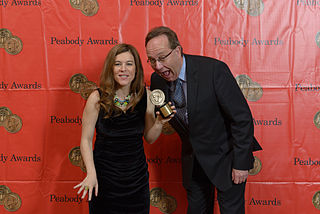 W
WKaterina Cizek is a Canadian documentary director and a pioneer in digital documentaries. She is the Artistic Director, Co-Founder and Executive Producer of the Co-Creation Studio at MIT Open Documentary Lab.
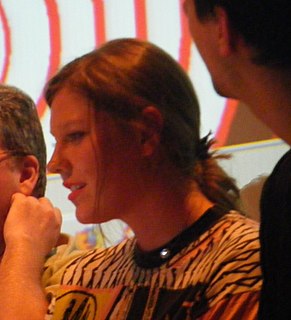 W
WPetra Cortright is an American artist working in video, painting, and digital media.
 W
WChar Davies is a Canadian contemporary artist known for creating immersive virtual reality (VR) artworks. A founding director of Softimage, Co, she is considered a world leader in the field of virtual reality and a pioneer of bio-feedback VR. Davies is based in rural Québec and San Francisco.
 W
WCaterina Davinio is an Italian poet, novelist and new media artist. She is the author of works of digital art, net.art, video art and was the creator of Italian Net-poetry in 1998.
 W
WHeather Dewey-Hagborg is an information artist and bio-hacker. She is best known for her project Stranger Visions, a series of portraits created from DNA she recovered from discarded items, such as hair, cigarettes and chewing gum while living in Brooklyn, New York. From the extracted DNA, she determined gender, ethnicity and other factors and then used face-generating software and a 3D printer to create a speculative, algorithmically determined 3D portrait. While critical of technology and surveillance, her work has also been noted as provocative in its lack of legal precedent.
 W
WJulie Freeman is an artist whose work spans visual, audio and digital art forms and explores the relationship between science, nature and how humans interact with it.
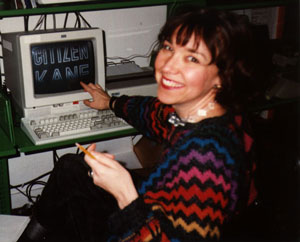 W
WIngeborg Fülepp, born in is a Croatian artist, university teacher, curator and film editor.
 W
WEleanor Gates-Stuart is a visual media artist based in Australia, born in the UK, whose focus is primarily on scientific exploration and technology, both in the advancement of innovation and in communicating her artistic practice in new and innovative ways, questioning and engaging audiences in art, science and technology. Working with major research organisations, museums, business and government, her scope of artistic creativity and research interests are extensive and includes interactive exhibits and the application of innovative materials such as the Bugs titanium insects and Hot Seeds holographic works.
 W
WOlena Golub ; was born December 25, 1951 is a Ukrainian contemporary artist, collage artist, painter, art critic, and member of National Union of Artists of Ukraine ; member of Hungarian Electrographic Art Association. She is a curator and participant of many art projects, national and international. Her works have been exhibited in several countries. Her works exhibited in countries: Germany, Netherlands, Belgium South Korea, Poland, Austria, Hungary and other. Some of her art works are in the National Art Museum of Ukraine, the Museum of Pannonhalma Archabbey, Hungary and other.
 W
WHelen Varley Jamieson is a digital media artist, playwright, performer, director and producer from New Zealand. She "is engaged in an ongoing exploration of the collision between theatre and the internet." Since 1997 she has been working on the internet professionally. In the year 2000 Helen Varley Jamieson coined the term cyberformance. This term is a combination of two words, cyberspace and performance. Jamieson states that "cyberformance can be located as a distinct form within the subsets of networked performance and digital performance, and within the overall form of theatre, as it is a live performance form with an audience that is complicit in the completion of the work in real time."
 W
WNatalie Jeremijenko is an artist and engineer whose background includes studies in biochemistry, physics, neuroscience and precision engineering. She is an active member of the net.art movement, and her work primarily explores the interface between society, the environment and technology. She has alternatively described her work as "X Design" and herself as a "thingker", a combination of thing-maker and thinker. In 2018, she was Artist in Residence at Dartmouth College, and is currently an associate professor at New York University in the Visual Art Department, and has affiliated faculty appointments in the school's Computer Science and Environmental Studies.
 W
WOlga Kisseleva is a Russian artist. Olga Kisseleva works mainly in installation, science and media art. Her work employs various media, including video, immersive virtual reality, the Web, wireless technology, performance, large-scale art installations and interactive exhibitions.
 W
WBrenda Laurel, Ph.D. is a video game designer and researcher. She is an advocate for diversity and inclusiveness in video games, a "pioneer in developing virtual reality", a public speaker and an academic. She is also a board member of several companies and organizations. She was founder and chair of the Graduate Design Program at California College of the Arts (2006–2012). and of the Media Design graduate program at Art Center College of Design (2000–2006). She has worked for Atari, co-founded the game development firm Purple Moon, and served as an interaction design consultant for multiple companies including Sony Pictures, Apple, and Citibank. Her current work focuses on STE(A)M learning and the use of augmented reality in STE(A)M learning.
 W
WAlicia Leeke, a native South Carolinian, is a painter and artist working in Columbia and Charleston, South Carolina. She first became known for her post-impressionistic style and incorporation of Fauvism. Her artwork is distinctive for its dry brush painting technique, gentle distortion of linear perspective, and use of thick line and brush strokes.
 W
WLynn Hershman Leeson is an American artist and filmmaker. Her work combines art with social commentary, particularly on the relationship between people and technology. Leeson's work in media-based technology helped legitimize digital art forms.
 W
WOlia Lialina is an Internet artist and theorist, an experimental film and video critic and curator.
 W
WMarita Liulia is a visual artist working primarily in interactive multimedia. Her debut CD-ROM Maire (1994) was among the very first works of art published in this format in the world. Her production includes multi-platform media artworks, photography, paintings, short films, books and stage performances. Her works have been exhibited and performed in 50 countries and she has received numerous international awards. Liulia first became interested in photography, painting, experimental film and cultural history while studying at Savonlinna Upper Secondary School of Art and Music. She continued her artistic studies at the University of Art and Design Helsinki, and broadened her horizons also by studying aesthetics, literature and political history at the University of Helsinki, graduating with a Bachelor of Arts in 1986.
 W
WGretta Louw is a multi-disciplinary artist who has worked with artforms as varied as digital media and networked performance, installation and video art, and fibre art. She lives and works in Germany and Australia. Her artistic practice explores the potential of art as a means of investigating psychological phenomena, particularly in relation to new technologies and the internet. Her focus is on how new digital technologies are shaping contemporary experience.
 W
WWendy McMurdo specialises in photography and digital media. In 2018 she was named as one of the Hundred Heroines, an award created by the Royal Photographic Society to showcase the best of global contemporary female photographic practice.
 W
WRosa Menkman is a Dutch art theorist, curator, and visual artist specialising in glitch art and resolution theory. She investigates video compression, feedback, and glitches, using her exploration to generate art works.
 W
WVera Molnár is a French media artist of Hungarian origin. She is considered to be a pioneer of computer art.
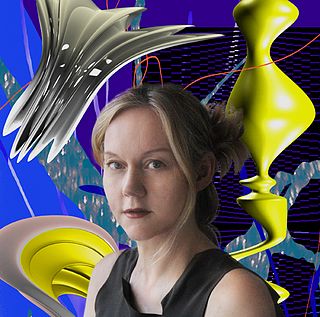 W
WPia Myrvold is a Norwegian artist and designer specialized in interactive art interfaces. In her work she mixes technology and different artistic media, such as 3D animation, painting, video, fashion and design, in order to build a new relationship between the art, the dissemination of ideas and the public. She lives and works in Paris.
 W
WBarbara Nessim is an American artist, illustrator, and educator.
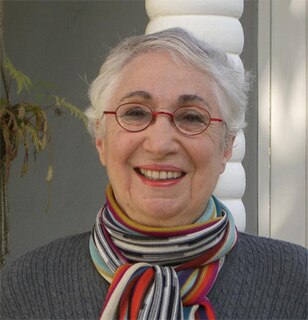 W
WSonya Rapoport was an American conceptual/digital artist and New media artist who created computer-assisted interactive installations and participatory web-based artworks.
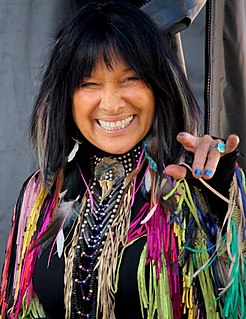 W
WBuffy Sainte-Marie, is an Indigenous Canadian-American singer-songwriter, musician, Oscar-winning composer, visual artist, educator, pacifist, and social activist. Throughout her career in all of these areas, her work has focused on issues facing Indigenous peoples of the Americas. Her singing and writing repertoire also includes subjects of love, war, religion, and mysticism. She has won recognition, awards and honours for her music as well as her work in education and social activism.
 W
WEllen R. Sandor is an American new media artist. She is also founder of the Chicago-based (art)n, a collective of artists, scientists, mathematicians, and computer experts. Ellen Sandor and (art)n create sculptures that contain computer-generated photographic images that appear to be three dimensional. She is best known for combining computer graphics, sculpture, and photography to visualize subject matter that includes architecture, historical events, and scientific phenomena such as the AIDS virus, Neutrinos, Microglia, and CRISPR.
 W
WMaureen Selwood is an Irish-born American filmmaker and visual artist whose works employ simple line drawings, marriages between animation and live footage, digital projections and installations. She is a pioneer in the field of independent and experimental animation. She has received numerous awards, including a Guggenheim Fellowship, and is the first animation artist to be awarded the Rome Prize in Visual Arts from the American Academy in Rome.
 W
WAgustina Casas Seré Leguizamon is an international award-winning digital artist, Editor-in-Chief and Operations Executive. She is the founder and Editor-in-Chief of Baszari and Baszari magazine. For more than a decade she has worked in both the fashion and the publishing world. At age 24 she was the Creative Director of Kenzo Takada in Paris, France. Her digital art collection "Ensueños Rioplatenses," was declared a "National Work of Tourist Interest" by the government of Uruguay, the highest artistic honor awarded by that nation. Casas was also officially declared a "Young Leader in Latin America" by the Washington, D.C.-based Inter-American Development Bank (IBD). Casas was named by the Museum of the Americas as "one of the most influential artists of 2015," and she was permanently admitted to its 100 Certified Artists Organization. Casas' work has been exhibited across the globe, including as part of Google's Project for New Media in New York and in private commissions and exhibitions by Fortune 500 companies, such as Fiat (2013) and Goodyear (2014).
 W
WAnita Ondine Smith is an Australian–British transmedia storyteller.
 W
WNicole Stenger is a French-born American artist, pioneer in Virtual Reality and Internet movies. In 1989–1991, she was a research Fellow at MIT. In 1991–1992, she was a Visiting Scholar at the Human Interface Technology Laboratory (Hitlab) in Seattle. Her works have been featured in the SIGGRAPH Art Show, the FILE Festival, the JavaMuseum, the Cartier Art Foundation and are part of the Archive of Digital Art (ADA). In 2013, she was included in the "Contemporary women artists on the web" collection of the National Museum of Women in the Arts, in Washington DC.
 W
WMyriam Thyes is a new media artist from Switzerland. She lives and works in Düsseldorf.
 W
WAmalia Ulman is an Argentinian artist based in New York City whose practice includes performance, installation, video and net-art works.
 W
WFernanda Bertini Viégas is a Brazilian scientist and designer, whose work focuses on the social, collaborative and artistic aspects of information visualization.
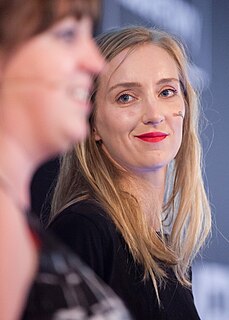 W
WAddie Wagenknecht is an American artist and researcher living in New York City and Austria. Her work deals primarily with pop culture, feminist theory, new media and open source software and hardware. She frequently works in collectives, which have included Nortd Labs, F.A.T. lab, and Deep Lab. She has received fellowships and residencies from Eyebeam, Mozilla, and The Studio for Creative Inquiry at Carnegie Mellon University.
 W
WCorinne Whitaker is an American artist who works in digital imaging and digital sculpture. She founded the Digital Giraffe in 1994, an online monthly art journal. Her works have been exhibited in about 300 group and solo shows.
 W
WAlthough women artists have been involved in the making of art throughout history, their work, when compared to that of their male counterparts, has been often obfuscated, overlooked and undervalued. Many of their works have been wrongly attributed to men artists. Prevailing stereotypes about the sexes have caused certain media, such as textile or fiber arts, to be primarily associated with women, despite having once been categories, such as ceramic art, in which both men and women participated. Additionally, art forms that have gained this distinction are, as in the case of both textile and fabric arts, demoted to categories like "arts and crafts", rather than fine art.
 W
WLisa Wray is a Pennsylvania-based artist, and one of the early pioneers of visual graphic media arts. Her works can be viewed as tradigital art and metaphysical art. Wray graduated from the Hussian School of Art, Philadelphia in 1979, where she studied commercial and fine art. She was a freelance artist in the late 1980s, and owned a print shop. Wray created some of the artwork in a series called the "Renaissance of Metaphysical Imagery" as early as 1978. In 1983, she started creating prototypes of the original works—from color copies, color photos or film negatives made in her graphic arts darkroom—in an attempt to produce metaphysical art, but discovered that the mechanical methods available could not achieve the accuracy of computer systems. "In 1983, when the first prototypes were made, the hardware did not exist to output high resolution in a hard copy form", she remembers.
 W
WJody Zellen is a Los Angeles-based artist whose practice involves digital art, painting, video art and drawing. Zellen is known for her interactive installations, public art, curated exhibitions and art criticism. She employs media-generated representations as raw material for aesthetic and social investigations that combine text and image. Zellen's artistic practice ranges from mobile apps, net art and digital animation to drawing, painting, photography and artists' books. Her fourth curated exhibition "Poetic Codings" was the nation's first touring exhibition of artists' apps.